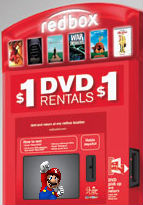 Earlier this week, I pondered the ways in which I might pay for the Playstation Network, because Sony is considering a premium version of its online service for next year, but hasn’t explained what it will entail.
Earlier this week, I pondered the ways in which I might pay for the Playstation Network, because Sony is considering a premium version of its online service for next year, but hasn’t explained what it will entail.
It appears that Sony’s been asking some of its customers to ponder as well, with a survey conducted by IPSOS Online Research that lists 22 potential features. Not all the features are included in every plan, and survey takers were asked to choose the plan the like best. Kotaku has that entire survey posted here, but I’d still treat it as a rumor because it was sent in by a reader, not officially from IPSOS. And it’s just a survey, so there’s a chance none of these features will make the cut.
It’s important to note that the survey doesn’t mention any existing PSN features. Sony has said that everything you currently get for free will remain free. With that in mind, I’m torn between “Option 1” and “Option 2,” both of which are proposed for $70 per year. Here are some highlights from those plans:
Access to Beta Games: I don’t really enjoy playing part of a game in unfinished form, but I could see some members digging the idea of exclusive early access. That’s what makes E3 such a rush for us press types.
Cross-Game Voice Chat: Oh heck no. This oft-requested feature, which Xbox Live has offered since the Xbox 360’s debut, really ought to be free. But I’d really like to have it either way.
Full Title Trial – First Hour Free: Now we’re talking. If you avoid one game purchase because you hated the trial, the PSN membership pays for itself.
Free Access to PSOne Classics, PSP Minis and PSP/PS3 Themes: At last, a huge perk in the form of actual games to play. This would be a dealmaker for me.
Discounts on Store Content: Technologizer reader ReynaldoRiv had this on his wishlist. Someone at Sony must’ve been listening.
Loyalty Program Rewards: And I had this on mine. It’s only fair to butter up your best customers.
Catch-Up TV: I don’t know enough about this to give a “yay” or “nay,” but I’m intrigued.
The features in this survey are less ambitious than the ones I dreamed up, but they’re also more practical in the short-term. If Sony fused together all the above options in one package, I’d probably pay for that, too.







